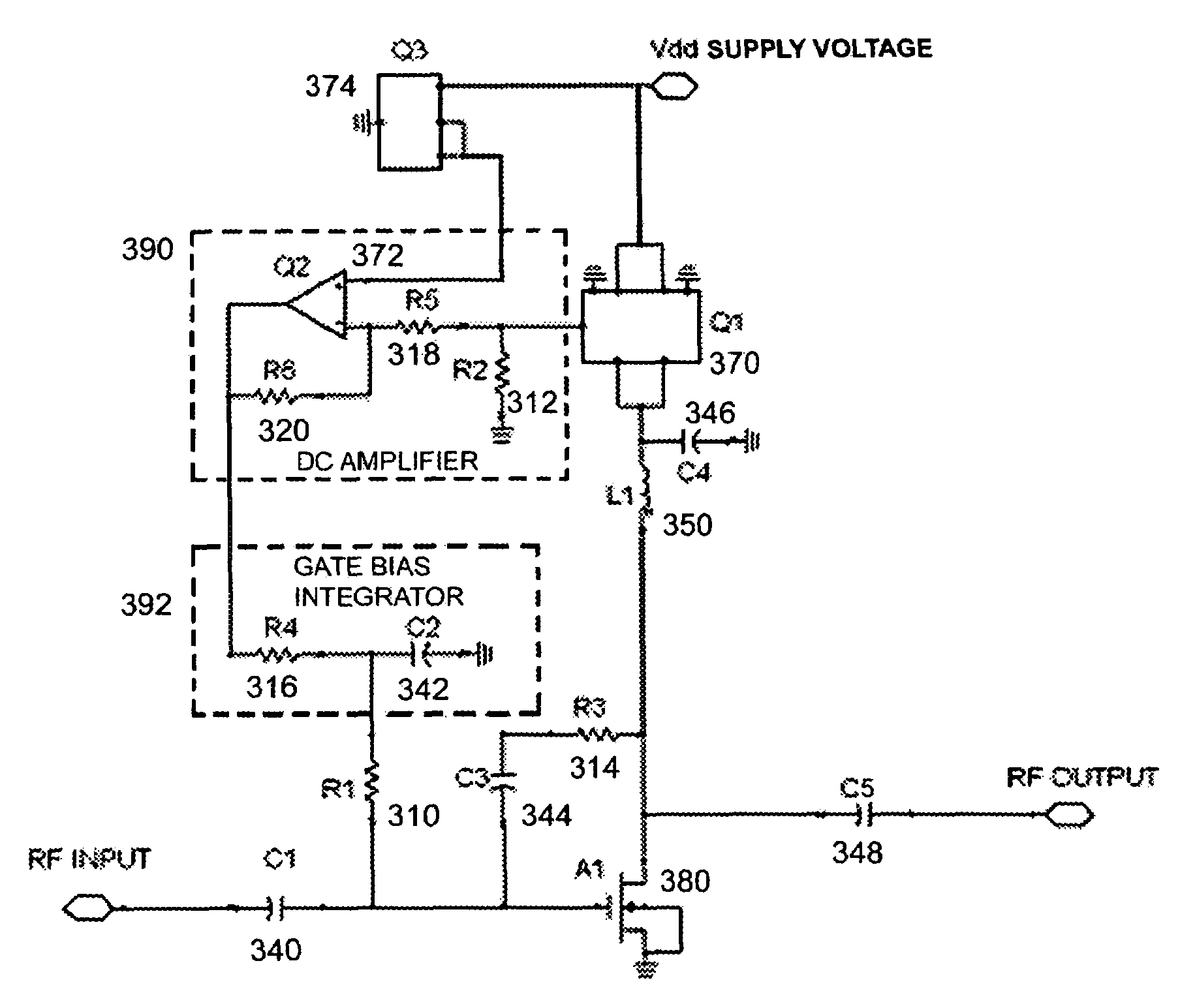Automatic biasing and protection circuit for field effect transistor (FET) devices
a protection circuit and field effect transistor technology, applied in the direction of amplifiers, amplifiers with semiconductor devices only, amplifiers with semiconductor devices, etc., can solve the problems of component reliability and circuit optimization, inability to optimize, and inherent disadvantages of component reliability
- Summary
- Abstract
- Description
- Claims
- Application Information
AI Technical Summary
Benefits of technology
Problems solved by technology
Method used
Image
Examples
Embodiment Construction
[0038]FIG. 1 shows a schematic of an output amplifier stage with a potentiometer-controlled gate bias circuit. The FET A180 requires the following components for normal operation. Capacitors C140 and C548 are DC blocking input and output capacitors. Resistor R110 and capacitor C242 are required for the application of a DC bias voltage to the gate of the transistor A180. Resistor R314 and capacitor C344 provide RF negative feedback. Inductor L150 functions as an RF choke. Capacitor C446 is a bypass capacitor on one end of the RF choke L150. Resistor R212 is the potentiometer that provides an adjustment for the gate voltage. The circuit of FIG. 1 has no stabilization of the gate voltage and relies completely on the voltage stability of the drain supply.
[0039]FIG. 2 shows a schematic of an output amplifier stage with a voltage regulator and potentiometer-controlled gate bias circuit. The voltage regulator Q1170 supplies a fixed voltage output that is divided by potentiometer R2112. Oth...
PUM
 Login to View More
Login to View More Abstract
Description
Claims
Application Information
 Login to View More
Login to View More - R&D
- Intellectual Property
- Life Sciences
- Materials
- Tech Scout
- Unparalleled Data Quality
- Higher Quality Content
- 60% Fewer Hallucinations
Browse by: Latest US Patents, China's latest patents, Technical Efficacy Thesaurus, Application Domain, Technology Topic, Popular Technical Reports.
© 2025 PatSnap. All rights reserved.Legal|Privacy policy|Modern Slavery Act Transparency Statement|Sitemap|About US| Contact US: help@patsnap.com



